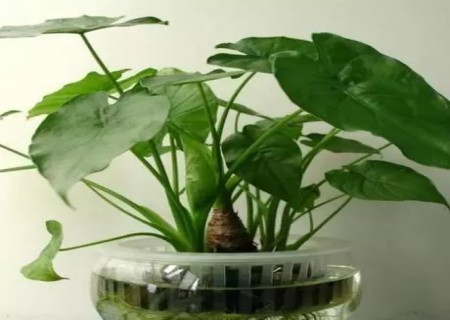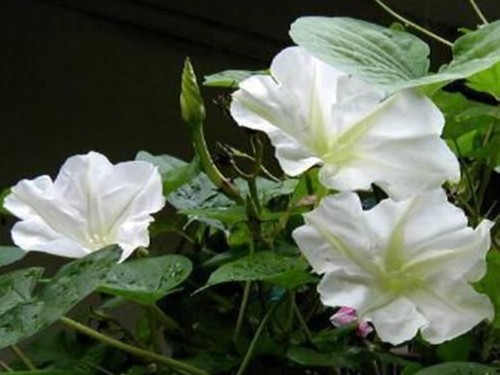Planting technique of potted night flower
Night flower is an evergreen shrub of Magnolia of Magnoliaceae, with about 60 species, distributed in North America and Asia. There are 22 species in China, which are widely distributed in the north and south provinces. They are beautiful ornamental and fragrant tree species. Night flower leaves green flowers, tree posture small and exquisite, green and white globular flowers in summer, day and night closed, delicate and elegant, so it is also known as night magnolia, often planted in parks and courtyards in the south, can also be used for potted plants, decorated living rooms and rooms, has a higher ornamental value.

The conventional propagation of night flower mainly uses striping and grafting, but the propagation is slow, so it is difficult to meet the market demand. Tissue culture technology can greatly improve the propagation speed and has a certain application prospect.
The night flower is graceful, small and exquisite, the summer will open green and white globular flowers and close day and night, elegant fragrance, suitable for planting in the southern park and courtyard, can also be used as a potted ornament, as a living room and bedroom decoration. The following is to introduce the planting method of night lilies:
1. The night flower loves the warm and humid living environment, and can bear shade. Most of them live under the evergreen broad-leaved forest at an altitude of more than 600 to 900 meters. This kind of plant has poor resistance to poisonous gases. We generally use the method of grafting and high-altitude striping to propagate. The method of high-altitude striping is suitable for breeding after the weather turns warm in early spring or in autumn. After rooting, it can be moved into the nursery to produce large seedlings. The survival rate is relatively high, which can reach 90% or more.
(2) remove the rooting test-tube plantlets and refine the seedlings in natural light for about 7 days before transplanting. When transplanting, take out the seedling washing medium, plant it in the soil sterilized by 0.3% potassium permanganate, pour through water, spray 800 times methyl topiramate for sterilization, cover with film and sunshade net, maintain a certain humidity, and the survival rate is up to 90%.
3. Potted night flowers are best planted in mountain mud. Remember that calcareous soil must not be used for cultivation. The soil must be acidic, and the best PH value is 5.5: 8.5. As a family bonsai, you can generally use 6 parts of vegetable garden soil. 4 parts of river sand and half a spoonful of black alum can be used together. Night flowers are suitable for free cultivation outdoors after mid-April, with a light transmittance of 30% and 40%.
4. The water conditions of night flowers are usually watered once every two or three days in spring, because the northern spring is relatively dry, which is easy to cause the leaves to turn yellow, so it is best to continuously water alum fertilizer 3 times every two or three days for 4 times, while in summer, because the weather is dry and hot, it is necessary to spray water frequently to increase the humidity of the air, and after autumn, it is necessary to water less and increase the light.
5. Autumn is more suitable for pruning and shaping dead and dislocated branches. In winter, it is generally placed in places where the indoor sunlight is out of direct exposure. The temperature is suitable to be kept between 10 degrees Celsius and 12 degrees Celsius during the day, and not less than 5 degrees Celsius or more than 10 degrees at night, so as not to be disadvantageous to hibernation and affect the flowering of the following year. During the growing period, it is necessary to apply rotten cake fertilizer every 15 days, and stop applying nitrogen fertilizer before flowering. More phosphorus and potassium fertilizers are applied to promote the fragrance of flowers, but no fertilizer is needed for indoor maintenance in winter.
Time: 2019-05-25 Click:
- Prev

Dripping Guanyin how to hydroponic culture-dripping Guanyin hydroponic culture method
Dishui Guanyinology is called sea taro, as well as Guanyinlian, wild taro and so on. Belongs to Araceae, Amorphophallus. It is native to the south and southwest of China. Hydroponic dripping Guanyin leaves are as big as the cover, the four seasons are green, and the plant height can reach more than 1 meter, which has high ornamental value. When Dishui Guanyin blossoms, look at it from afar
- Next

Moonlight flower planting method
The main results are as follows: 1. Select Pingchuan with good drainage and fertile soil, low-lying land and hilly land with irrigation conditions. Avoid watermelons and other melons, welcome stubble. Soil preparation: top pulp and ridge, timely suppression and preservation of soil moisture. The transplanted ridge is a long-mouth ridge. The width of the ridge is 9~13cm, and 7 to 8 empty ridges in the middle should also be planted to control weeds.
Related
- Fuxing push coffee new agricultural production and marketing class: lack of small-scale processing plants
- Jujube rice field leisure farm deep ploughing Yilan for five years to create a space for organic food and play
- Nongyu Farm-A trial of organic papaya for brave women with advanced technology
- Four points for attention in the prevention and control of diseases and insect pests of edible fungi
- How to add nutrient solution to Edible Fungi
- Is there any good way to control edible fungus mites?
- Open Inoculation Technology of Edible Fungi
- Is there any clever way to use fertilizer for edible fungus in winter?
- What agents are used to kill the pathogens of edible fungi in the mushroom shed?
- Rapid drying of Edible Fungi

